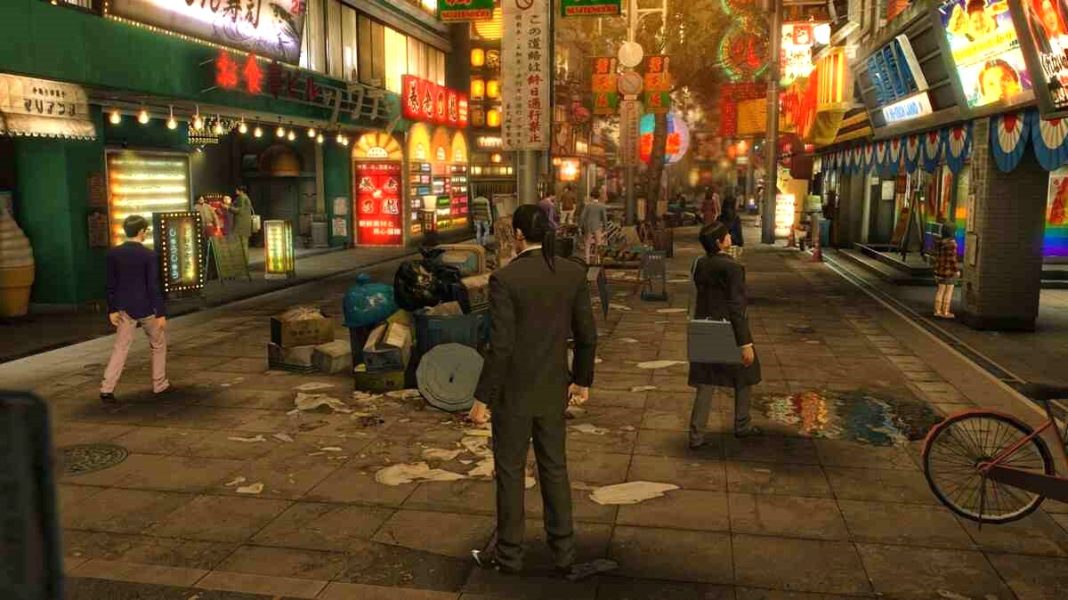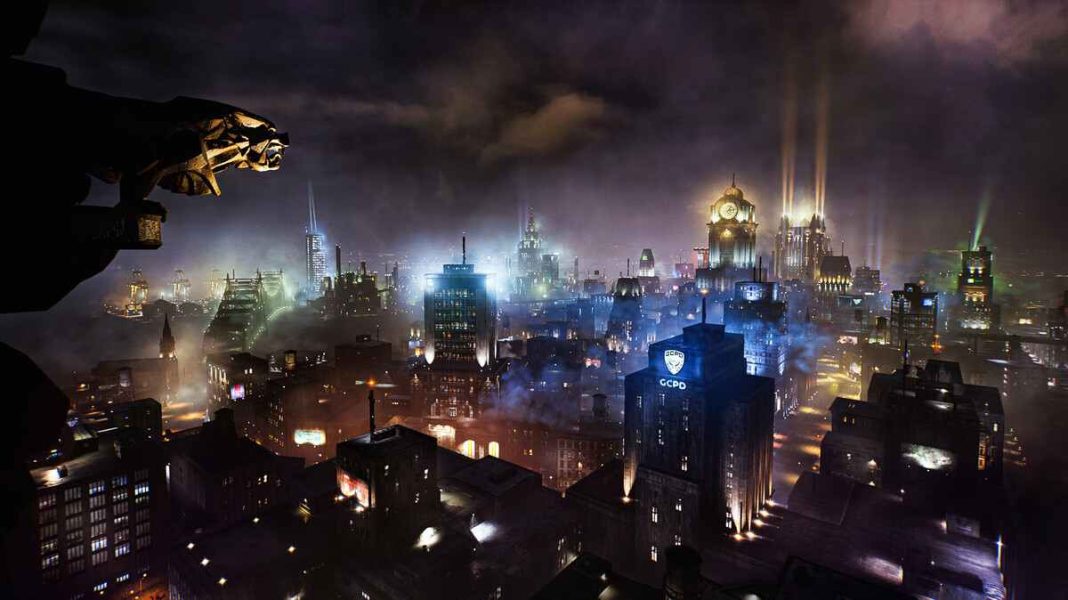Open-world games transport players into different realities. Whether it’s the known lands of some of the most recognizable cities around our globe or new mystical, fantastical lands created with nothing but imagination, that’s the beauty of open-world games—they let us explore worlds far away from us or beyond our vision from the comfort of our sofas. While more worlds have been featured in games over the years than we can count, it’s nice to jump into one of them from time to time and see what makes said world truly special and worth exploring.
While the prospect of a giant world that you can get lost and sink in countless hours exploring every nook and cranny is interesting, let’s take a look at a smaller world, or should I say two separate worlds, today. I am talking about the different cities that have been featured in the “Yakuza” games. There are quite a few here, especially if you count one-offs like Onomichi from “Yakuza 6,” Ryukyu from “Yakuza 3,” and the whopping five cities, including but not limited to Nagoya, Fukuoka, and Sapporo, that they created for “Yakuza 5”. Unfortunately, we won’t be talking about those here. Don’t get me wrong; they are great, believable spaces that were created, but with them being one-offs and never being used again, I reckon we should shift our focus to the mainstays of the series. Kamurocho and Sotenbori. Why these two only? Well, because Kamurocho is synonymous with “Yakuza” and is present in every single game, Sotenbori has also been around since “Yakuza 2.”
Kamurocho and Sotenbori are small areas that act more like city blocks than full-fledged cities. Both of these locations are painstakingly lifelike and handcrafted to perfection. Though their maps are tiny when compared to other open-world games, the areas here are more believable and feel more lived-in than most other games featuring a giant map that you can explore. Before we jump in, I’d like to inform you that we’ve seen these locations, especially Kamurocho, across many years with drastic changes made to them from game to game, so those specific changes won’t be mentioned. I won’t be talking about it like “Kamurocho from Yakuza 6” or “Kamurocho from Yakuza 0” here, but instead, talk about it like a singular city that saw alterations across its many years. Another thing to note is that the coverage for these locations will only be based on the “Yakuza” series and not the “Judgment” series, as they take place in the same universe but are still different games altogether. I’ll cover the “Judgement” series at a later date. With all that preamble and notices out of the way, let’s take a tour of the open worlds of “Yakuza.”.
Kamurocho
Kamurocho, Tokyo, inspired by the real-life district of Kabukicho, Tokyo, is a red-light district full of neon signs and all the glam you can think of. An archway welcomes you into Tenkaichi Street, full of stores inviting you in. You can visit the local Serena bar on Tenkaichi Street for some of the finest drinks across Tokyo or go and buy some snacks or medicine at the Poppo Store. You can also visit the hottest host club in town, Stardust, situated on Tenkaichi Street just across Serena. Running parallel across Tenkaichi Street are Nakamichi Street and Pink Street. Nakamichi Street is wider and more vibrant, and it is full of cafes and eateries. You can also find the Don Quijote Store on Nakamichi Street, full of the finest imported goods from all across the planet. Nakamichi Street is usually a crowded spot with a huge variety of things to see, do and buy. Pink Street, on the other hand, is where you will find all manners of adult entertainment from its hostess clubs, Club Asia, and video stores. You better be on guard when walking around Pink Street, as it can get a little dangerous here.
At the end of Pink Street, you’ll come across the remains of Shangri-La. The largest and most posh/exclusive soapland the city had ever seen. Majima drove a dump truck into the building, and ever since, it’s been abandoned and acts as a refuge for drug dealers, addicts, and other kinds of shady folks. Right next to Shangri-La is what is known as the Champion District. The Champion district consists of a few roads and alleyways full of dive bars. Be careful when walking across the Champion District, as it’s not a very friendly and welcoming place and is quite dangerous overall.
Further inside Kamurocho, you’ll come across Taihei Boulevard, which was home to a shopping alley of sorts and now is dominated by the Millennium Tower, an office building built smack dab in the middle of Kamurocho. You can visit all types of cafes and restaurants at the base of the Millennium Tower and encounter daily Joes and Janes who were taking a break from their jobs or just hanging out, depending on the time of day. West of the Millennium Tower lies Theatre Square, a wide open square next to a theater, duh, where people gather for events or partake in the activities that Club SEGA has to offer. Theatre Square was also home to MachBowl, which is now replaced by the RIZAP gym, and while everyone loves their fitness, bowling was a fun activity that is missed. Theatre Square is the place you go to find informants selling information, visit the internet cafe nearby to indulge in some live chats, or simply go down the stairs and visit the Debolah disco if you feel like dancing.
Further north, you’ll find yourself on Shichufuku Street, which is in the Hotel District and has seen the most changes over the years. Shichufuku Street was home to the Pocket Circuit Stadium, The Maharaja Disco, the best grill or barbecue joint in Kamurocho, and a lot more, but now it is just a street full of standard Poppo stores with a few restaurants sprinkled in. The Hotel District has also seen many changes over the years, but one thing that has remained constant is the Yoshida Batting Center, which you can visit to test your baseball skills. The Hotel District, unfortunately, lost the Vincent Bar, where people used to go to play pool or darts.
East of the now-closed Vincent Bar lies Kamurocho Hills, the hottest, most luxurious, and most expensive residential properties you can buy in Kamurocho, constructed by none other than Majima Construction. Before the existence of Kamurocho Hills, that ground was home to a homeless camp that went by the name of “Purgatory.” Purgatory, on the surface, was a homeless camp, but beneath it lay an entire city featuring a casino, a battle arena, and other activities. It was also home to the Florist of Sai, a man who had eyes all over Kamurocho and knew every little secret of the city and its people.
That’s Kamurocho, a small and not-so-quiet city block in the middle of Tokyo. There’s a lot more to see and do in Kamurocho with things like its mahjong parlors if you have the itch to play mahjong. Or maybe you fancy yourself some shojo? Or, how about visiting some of the local gambling dens and betting your yen on games like Koi-Koi, Cee-Lo, Oicho-Kabu, and more? Kamurocho may be small in scale, but it is vast in detail and density. You can literally get lost in its streets, visiting every restaurant and trying all the different types of cuisines or soaking up the culture and activities that the city offers. Kamurocho is by far one of the most memorable and detailed open worlds that you can explore and sink hundreds of hours into. But wait, there’s more to the world of Yakuza 1. Let’s quickly take a look at Sotenbori now.
Sotenbori
Sotenbori, Osaka, is inspired by the real-life Dotenbori, Osaka, and is pretty much a virtual mirror image of that place. Sotenbori is much smaller in scale than Kamurocho but is more jam-packed and feels like they crowded every inch of this place—in a good way, of course. The area mostly consists of two streets running parallel to each other, a river separating them, and two bridges connecting them on either side. You can find pretty much every single activity in Kamurocho here, with Sotenbori having its own places to play Mahjong, Shogi, and other gambling games. The main draw of Sotenbori, in my opinion, is how flashy, elaborate, and welcoming its signs are in combination with its series of restaurants serving the finest meals all across Japan.
When you visit Sotenbori, you’ll be dropped off on Sotenbori Street, which serves as the centerpiece of this location. Sotenbori Street is always packed with people trying different meals across all of its restaurants. The restaurants themselves look very inviting, with giant signs, animatronics hanging above their entrances, and huge balloons and decorations covering the street. The crown jewel of Sotenbori Street, however, has to be the Cabaret Grand. A huge hostess club with the finest service and unrivaled ambiance if you can spare the yen, that is. You can also find Club Sega and a mini golf course here if you fancy that.
If you get tired of all the signs blasting in your face, you can cross the Iwao Bridge or Bishamon Bridge to get to the other side and enter Shofukucho. A more quaint area of Sotenbori where you can find stores, go play some games, or maybe enjoy an evening at a cabaret club. Shofukucho doesn’t have the same glam as on the other side of the bridge, but it does come with some secrets you can find, and there are some places you should avoid.
Overall, there’s not a lot that can be said about Sotenbori, as it is quite small but very detailed and intricate. Sotenbori has also not seen major changes like Kamurocho but has evolved in its own way over the years.
Kamurocho and Sotenbori have been the mainstays of the “Yakuza” series and are locations that are worth visiting and exploring. There is another location here that I didn’t cover. Introduced with “Yakuza Like A Dragon,” we got to the city of Isezaki Ijincho, Yokohama, and it is massive. The reason I didn’t cover that here is that Ijincho can literally get a whole essay written about it as it’s so large and packed with things to do, and since the series is rebranded to “Like A Dragon” now, I feel it’ll be best if we look into it when I start talking about “Like A Dragon” and “Lost Judgment.” Ijincho is here to stay now, and that much you can count on. Either way, I hope you enjoyed a somewhat detailed look into the worlds of “Yakuza,” and maybe, just maybe, these locations might have caught your interest. If so, then please check these games out, as they are truly masterpieces in every sense of the word. There’s so much more to these locations that I probably missed or didn’t mention on purpose, but you can figure those secrets out for yourselves, can’t you? Until then, thanks for reading.
See more: ‘Yakuza Kiwami 2’ Review And Gameplay, Explained: What Makes ‘Yakuza Kiwami 2’ Worth Playing?


